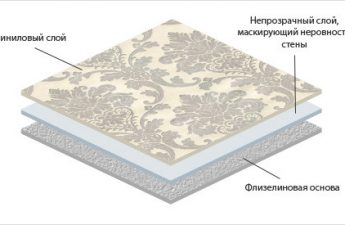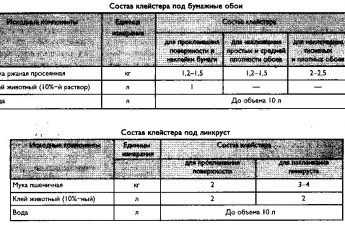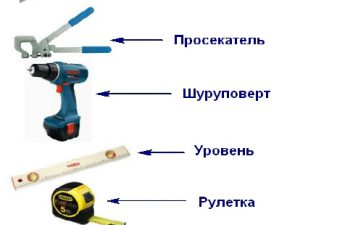If you decide to do the repairs yourself, you need toprovide appropriate training, both theoretical and practical. It is important to familiarize yourself with the principles of wallpapering, learn where to start gluing wallpaper, how to choose the right texture and shades. After all, in order to achieve the highest quality result, you need to approach the organization of decorative finishing and planning the interior of the room with all responsibility.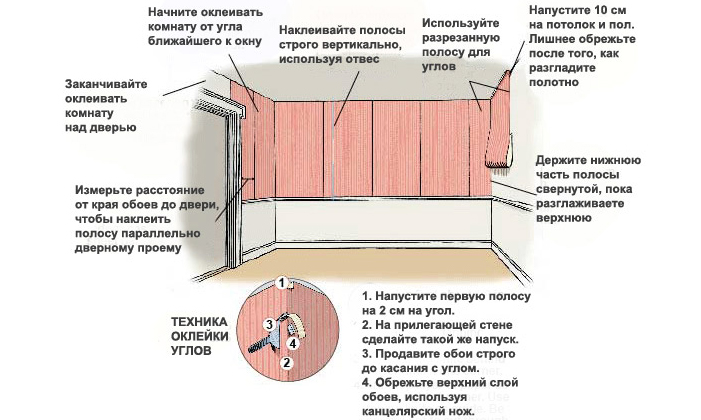 DIY wallpaper pasting scheme.
DIY wallpaper pasting scheme.
What do you need to know for beginners?
Many years ago, in Soviet times, wallpaperglued simply overlapping. The main secret of this method was the presence of a specialized patternless strip on one side of the material. The next layer was glued onto this strip. Pasting was carried out only from the window. This was done so that the transitions with the strip were not noticeable. But most often they were noticeable, although not as much as when pasting from another point. Now you can start gluing wallpaper from any place. However, most people follow the tradition, starting the decoration from the window. It is known that the main task during decorative finishing of walls with wallpaper is the clarity of lines and beauty, so it is worth starting with a line that sets a strict vertical. The role of such a vertical can be:
- doors;
- window;
- angles.
You can also simply draw a line that is perpendicular to the floor. Use a level for this.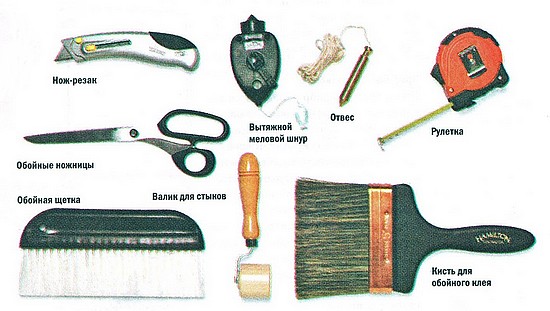 Wallpapering tools. Before you start wallpapering, you need to prepare the necessary tools:
Wallpapering tools. Before you start wallpapering, you need to prepare the necessary tools:
- ruler, tape measure, calculator and pencil for marking and measuring;
- roller, scraper and spatula to remove wallpaper;
- a shear knife, scissors and a cutter for cutting strips;
- clean floor or large table, brush and bucket for surface treatment with glue;
- plummet, stepladder, hammer, spirit level and nails for leveling and gluing;
- sponge and cleaning cloth.
It is important to prepare the room properly.First of all, you need to de-energize the sockets, and then remove the covers. You need to glue the wallpaper over the holes for the sockets. Make the cuts after the glue has dried. It is recommended to approach the doors from both sides. In this case, the canvas placed on the door must be cut to the height of the frame vertically. Then it is attached to the wall, cutting off the ledge, which is adjusted to the upper part of the frame. To make it easier to cut the lower and upper edges, it is worth using a triangular ruler. Return to the table of contents</a>
The order of wallpaper gluing
The first piece of cloth must be glued tightly tolandmark, and then move on step by step until the circle (or, more precisely, a rectangle) is closed. It is necessary to take into account the angle of incidence of sunlight from the window, otherwise the joints will stand out strongly, spoiling the impression. Sometimes the door frame becomes a starting point. It is believed that in apartments, interior doors are most often changed, so their corners become the most even. Doors have an ideal vertical level (during repairs, it is the door level that is most often checked and aligned), so there is no need to measure the door frame with a level.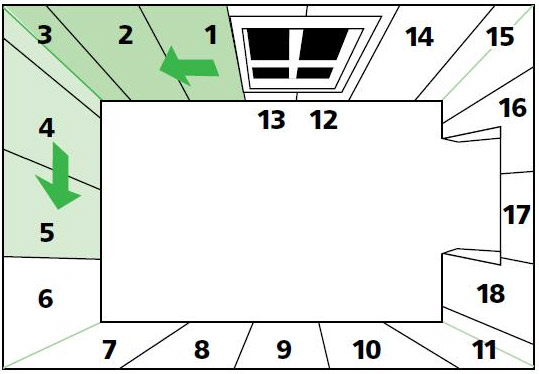 The procedure for wallpapering.The point of starting to glue wallpaper from such an ideal vertical line is that, starting from it, you can continue the gluing cycle. It turns out that each strip conveys a full vertical, so you need to glue the walls in a circle. It is known that it is difficult to find a perfectly even corner in an apartment now. Soviet construction is to blame for this, so you must definitely check the corners with a building level. It is worth measuring the ratio of the angles before deciding whether to use such an angle as a guide. A more important question is where to start gluing wallpaper in the corner. You cannot glue one sheet in the corner, because it can peel off or fold. It is recommended to glue several adjacent sheets overlapping. This will take more time, but the result will be more reliable and of higher quality. If the wallpaper has a geometric or other large pattern, then there is a possibility that in case of pasting in a closed circle, in the places of the beginning and finish (the first and last stripes), the patterns will not match at all. And the reason for this is not the patterns themselves, but the position of the wallpaper. Over time, the vertical is lost, and the wallpaper begins to deviate more and more with each subsequent wall. Return to the table of contents</a>
The procedure for wallpapering.The point of starting to glue wallpaper from such an ideal vertical line is that, starting from it, you can continue the gluing cycle. It turns out that each strip conveys a full vertical, so you need to glue the walls in a circle. It is known that it is difficult to find a perfectly even corner in an apartment now. Soviet construction is to blame for this, so you must definitely check the corners with a building level. It is worth measuring the ratio of the angles before deciding whether to use such an angle as a guide. A more important question is where to start gluing wallpaper in the corner. You cannot glue one sheet in the corner, because it can peel off or fold. It is recommended to glue several adjacent sheets overlapping. This will take more time, but the result will be more reliable and of higher quality. If the wallpaper has a geometric or other large pattern, then there is a possibility that in case of pasting in a closed circle, in the places of the beginning and finish (the first and last stripes), the patterns will not match at all. And the reason for this is not the patterns themselves, but the position of the wallpaper. Over time, the vertical is lost, and the wallpaper begins to deviate more and more with each subsequent wall. Return to the table of contents</a>
What should I consider while choosing wallpaper?
Before you glue wallpaper, you need to know about alltheir features. The determining factor during the selection is the condition of the walls and the purpose of the premises. For rooms with normal humidity and smooth walls, almost any finishing materials are suitable. Whereas for rooms with high humidity or hallways, washable wallpaper is better suited.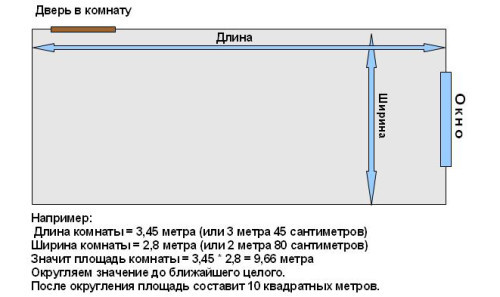 Calculation scheme for the area of the room for gluingwallpaper. Non-woven wallpaper hides minor irregularities perfectly, does not shrink much, and is very easy to work with, because the glue just needs to be applied to the wall. But you should pay special attention to the corners, because you need to glue the wallpaper correctly in these places to avoid folds. Embossed materials will also help hide minor irregularities in the walls. Wallpaper with large cells, a dense pattern or fiberglass is well suited for these purposes. Anyone who wants to decorate their interior in a folk or oriental style, as well as lovers of environmentally friendly and expensive materials should pay attention to natural wallpaper. Most often, these are bamboo products, which fit perfectly into different interiors and are considered the best assistant for the Japanese style. There is also liquid wallpaper. This is a very original coating, suitable for any room. It is applied like simple plaster to the base, and then the layer should become soft, similar to fabric. Acrylic wallpaper is similar to vinyl coating. They differ only in the layer of spraying applied to the paper. This type of wallpaper can be glued in a variety of rooms, because it is not afraid of moisture and mechanical impact. It differs from vinyl in thickness, which is several millimeters thinner. This should be taken into account if different materials are combined in the interior. It is important to remember that mold occurs in the corners: although many people start gluing wallpaper from there, first of all, the corners should be treated with fungicides. Return to contents</a>
Calculation scheme for the area of the room for gluingwallpaper. Non-woven wallpaper hides minor irregularities perfectly, does not shrink much, and is very easy to work with, because the glue just needs to be applied to the wall. But you should pay special attention to the corners, because you need to glue the wallpaper correctly in these places to avoid folds. Embossed materials will also help hide minor irregularities in the walls. Wallpaper with large cells, a dense pattern or fiberglass is well suited for these purposes. Anyone who wants to decorate their interior in a folk or oriental style, as well as lovers of environmentally friendly and expensive materials should pay attention to natural wallpaper. Most often, these are bamboo products, which fit perfectly into different interiors and are considered the best assistant for the Japanese style. There is also liquid wallpaper. This is a very original coating, suitable for any room. It is applied like simple plaster to the base, and then the layer should become soft, similar to fabric. Acrylic wallpaper is similar to vinyl coating. They differ only in the layer of spraying applied to the paper. This type of wallpaper can be glued in a variety of rooms, because it is not afraid of moisture and mechanical impact. It differs from vinyl in thickness, which is several millimeters thinner. This should be taken into account if different materials are combined in the interior. It is important to remember that mold occurs in the corners: although many people start gluing wallpaper from there, first of all, the corners should be treated with fungicides. Return to contents</a>
Practical tips for combining different materials
When combining different materials, it is necessarytake into account the basic methods of combining them, taking into account the texture, shades and many other points. With the help of combination, you can develop design skills, providing an original interior design. The question arises: how to glue wallpaper using horizontal alternation of several different materials? It is recommended to first glue the top part, and then the bottom. Thus, the canvases will be glued with an overlap, and a little material will remain between them, which will decrease when drying. It remains to cut off the excess parts, gluing the joint with a special decorative material, for example:
- decorative molding;
- curb;
- wooden panel.
This will help hide the joint.Some people, when vertically combining, start gluing wallpaper from the window, moving deeper into the room. The first strip is approximate. This placement provides an opportunity to hide the joints, because less light will fall on them. In the case of insert decoration, first of all, you need to glue the background wallpaper, using the traditional technique of pasting walls. As soon as the first layer dries, you can glue the relief decorative inserts. They can be located anywhere, because the joints are hidden with the help of wooden planks. The main things in this process are accuracy and patience. Work done in a hurry most often has to be redone.
